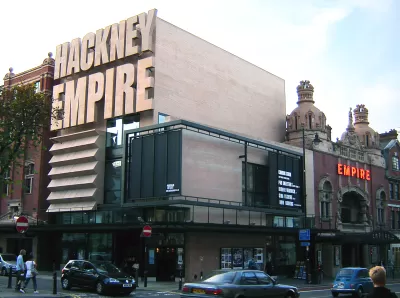From Motown to grunge, techno to hip hop, modern music came to life in garages, living rooms, churches, and warehouses. Urban design has been instrumental to what we listen to every day.

Journalist David Maraniss recently made the case for why single-family homes were crucial to the rise of Motown: every working-class family could own a piano. Here, Ian Wylie explores how urban design directly influenced some of the biggest trends in popular music.
On Seattle grunge Wylie writes, "Not only did that damp marine climate probably persuade bands to stay in their garages and practise more, but it's also fairly temperate, meaning the garages were warm enough to hang out in without needing to be heated separately – unlike, say, Minneapolis, where an unheated garage is a miserable place in winter."
Wylie documents why Berlin provided the perfect environment for electronic music to thrive. The city's abandoned warehouses, empty spaces, and disused bunkers provided ample room for dance parties and DJ experimentation. "Much of the recording of David Bowie's Berlin trilogy – Low, Heroes and Lodger – was completed at Hansa studios in the Kreuzberg district of west Berlin. From the control room, Bowie and his producer, Tony Visconti, could see over the Wall to the Red Guards in their gun turrets, who stared back through binoculars."
And in New York City, vibrant community centers gave rise to today's most widespread genre. "DJ Kool Herc, for example, held his first jams in the community centre of Sedgwick Avenue of the west Bronx. Afrika Bambaataa held his first parties in the Bronx River Community Center, jump-starting hip-hop in his section of the Bronx."
FULL STORY: From Berlin's warehouses to London's estates: how cities shape music scenes

Planetizen Federal Action Tracker
A weekly monitor of how Trump’s orders and actions are impacting planners and planning in America.

Congressman Proposes Bill to Rename DC Metro “Trump Train”
The Make Autorail Great Again Act would withhold federal funding to the system until the Washington Metropolitan Area Transit Authority (WMATA), rebrands as the Washington Metropolitan Authority for Greater Access (WMAGA).

DARTSpace Platform Streamlines Dallas TOD Application Process
The Dallas transit agency hopes a shorter permitting timeline will boost transit-oriented development around rail stations.

LA County Creating Action Plan to Tackle Extreme Heat
Los Angeles County is creating a Heat Action Plan to help communities stay safe during extreme heat, with steps like adding more shade, improving buildings, and supporting the neighborhoods most at risk.

Maryland Plans Quick-Build Complete Streets Projects
The state will use low-cost interventions to improve road safety in five Maryland counties.

Downtown Los Angeles Gears Up for Growth
A new report highlights Downtown L.A.’s ongoing revival through major housing projects, adaptive reuse, hospitality growth, and preparations for global events in the years ahead.
Urban Design for Planners 1: Software Tools
This six-course series explores essential urban design concepts using open source software and equips planners with the tools they need to participate fully in the urban design process.
Planning for Universal Design
Learn the tools for implementing Universal Design in planning regulations.
City of Charlotte
Municipality of Princeton
Roanoke Valley-Alleghany Regional Commission
City of Camden Redevelopment Agency
City of Astoria
Transportation Research & Education Center (TREC) at Portland State University
US High Speed Rail Association
City of Camden Redevelopment Agency
Municipality of Princeton (NJ)



























